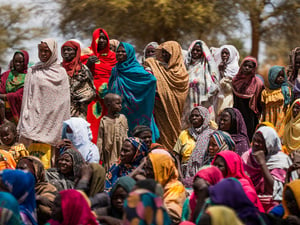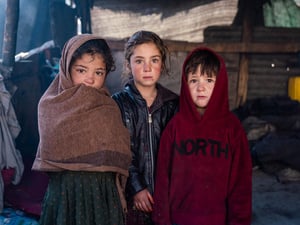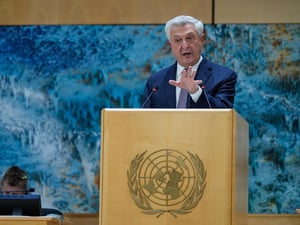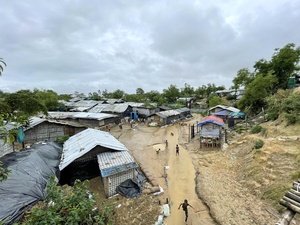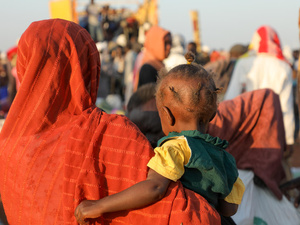Underfunding

Underfunding
Looking for information about underfunding in 2024?
Despite UNHCR’s efforts to lessen the impact of budget shortfalls, the reality remained stark: in 2024, the organization faced a severe funding gap, threatening its ability to carry out mandated activities.
The 2024 Underfunded Report shed light on the most critical needs across 17 operations and situations.
Explore the 2024 Underfunded Report
In 2025, underfunding will stop UNHCR from providing essential services to millions of people. UNHCR’s budget of $10.632 billion reflects the anticipated needs of a record 139.3 million forcibly displaced and stateless people, but we are struggling to secure the funds required.
As of the end of May 2025, UNHCR had funds available of $2.455 billion, or 23% of the budget, far less than is needed. This shortfall in funding runs counter to the reality of an increasing number of conflicts and crises that continue to displace populations at unprecedented rates.
The consequences of underfunding are far-reaching.
It hampers UNHCR's capacity to deliver life-saving protection and solutions such as asylum, registration, return or integration. It stops UNHCR from resettling child refugees and survivors of sexual assault. It endangers essential services such as cash assistance, shelter, water, sanitation, health care and education. Vulnerable people are cut off from the critical aid they need to survive and rebuild their lives. It also limits UNHCR's ability to respond to emergencies, exacerbating the plight of those caught up in unexpected conflicts or natural disasters.
Although UNHCR works for refugees the world over, we have traditionally received the bulk of our funding from a small number of donors, whose budgets are increasingly stretched. Early pledges from governments and the private sector, such as those made at the pledging conference in December 2024, provide some predictability and flexibility, but those pledges cover only a little of the anticipated needs.
The gap remains substantial, and support is needed – especially from governments with the power to help us diversify and sustain our funding. This situation calls for a renewed commitment from the international community to support UNHCR's mission and ensure that no one is left behind in times of crisis.
Follow this page for regular updates on underfunding, and what UNHCR is doing to prioritize its response. Given the importance of flexible funding to UNHCR’s operations, please also refer to our dashboard on the use of flexible funding.
Underfunding and the value of flexible funding
As of May 2025, in total UNHCR has $2.455 billion in funds available, equivalent to 23% of its budget of $10.632 billion. UNHCR has $780 million in flexible funding, equivalent to 25% of the funds available. Of that, $460.2 million is unearmarked funding, equivalent to 59% of flexible funding and 19% of all funding available.
Flexible funding – that is, unearmarked and softly earmarked funding – is crucial for UNHCR's underfunded operations. It provides the flexibility needed to allocate resources where they are most needed – in emergencies, in protracted crises, or in situations that are not in the spotlight. By ensuring neutrality and independence, flexible fundings strengthen UNHCR's ability to plan and implement effective humanitarian responses, ultimately making a significant difference in the lives of forcibly displaced people worldwide. With global displacement at record levels, predictable and flexible funding ensures life-saving aid – like shelter, healthcare, and protection – reaches the most vulnerable refugees and displaced people, even in underfunded crises.
Unearmarked funding
Contributed without restrictions on its use, it provides UNHCR with vital flexibility in determining how best to protect and assist people forced to flee who are in the greatest need or in the greatest risk.
Softly earmarked funding
It allows UNHCR to allocate resources across a range of countries and activities in a given region or situation, or a specific theme or activity in accordance with identified priorities.
An analysis of the allocation of flexible funding to these underfunded operations highlights their value. The top ten operations account for $4.402 billion, or 42% of the budget. These operations have been allocated $1.036 billion, equivalent to 20% of available resources.
Of the funds allocated, $260 million is in flexible funding, equivalent to 25% of the funds available, and 39% of the available flexible funding.
The $260 million in flexible funding includes $160.6 million unearmarked funding and $124.4 million in softly earmarked funding.
- Lebanon is the largest recipient of flexible funding, with $43 million, which is 30% of the funds allocated to the operation.
- Türkiye is the largest recipient of unearmarked funding, with $25.3 million, which is 43% of the funds allocated to the operation.
- The Syrian Arab Republic is the largest recipient of softly earmarked funding, with $17.7 million, which is 21% of the funds allocated to the operation.
On average, these operations have been allocated $26 million in flexible funding, and on average, flexible funding accounts for 29% of their available resources.
Previous editions of Underfunded Reports
Previous editions of the Underfunded Report are available in the dropdown menu below. Each edition includes an overview, financial tables, and case studies illustrating where and how funding gaps impact operations. Please select a publication to view or download.


